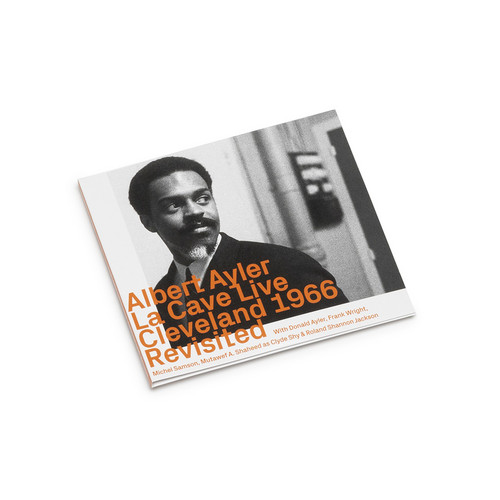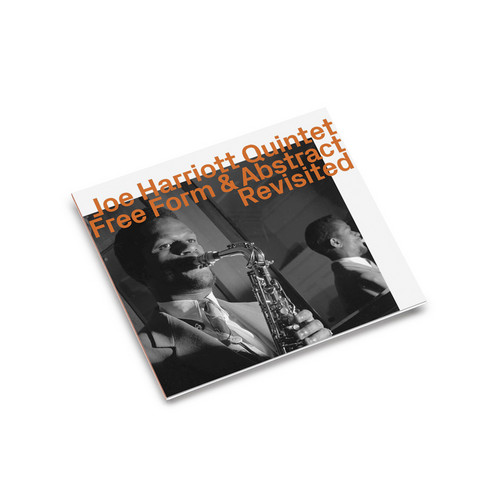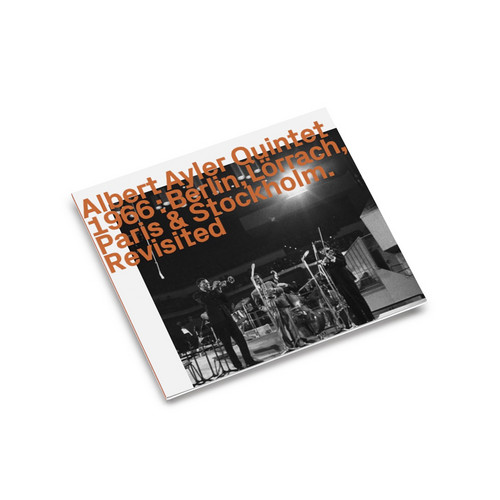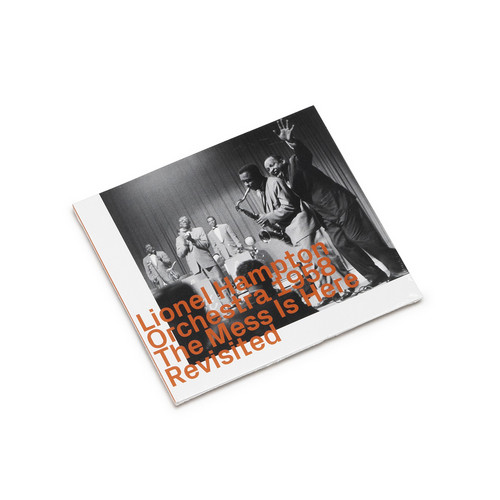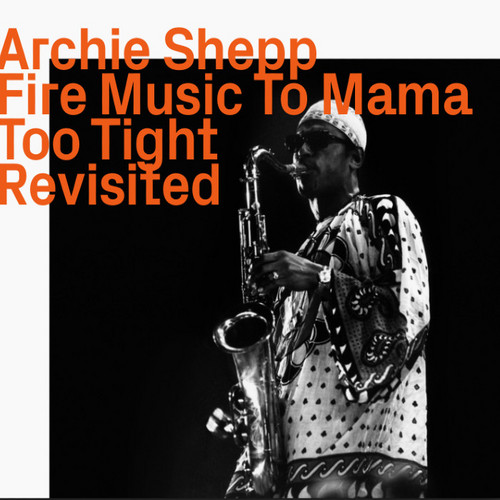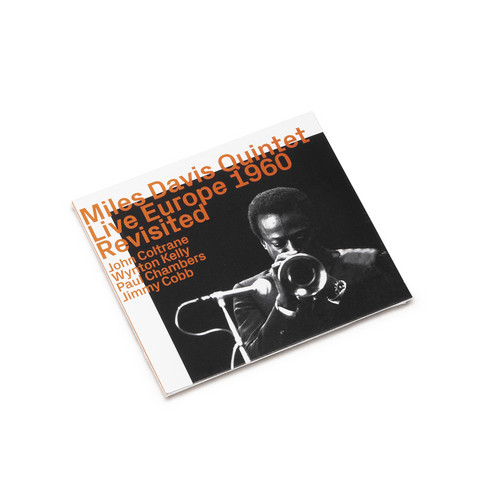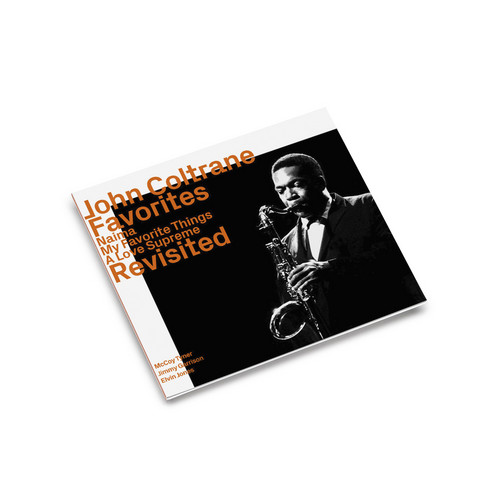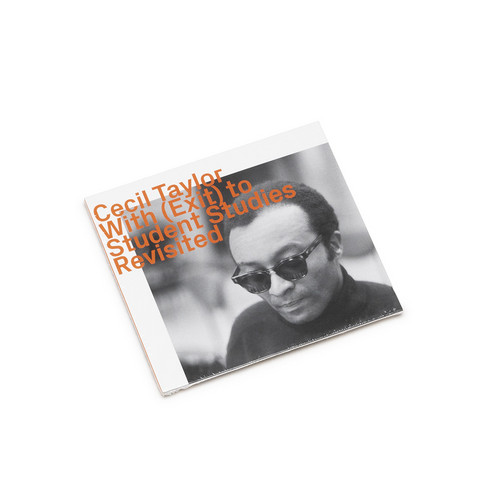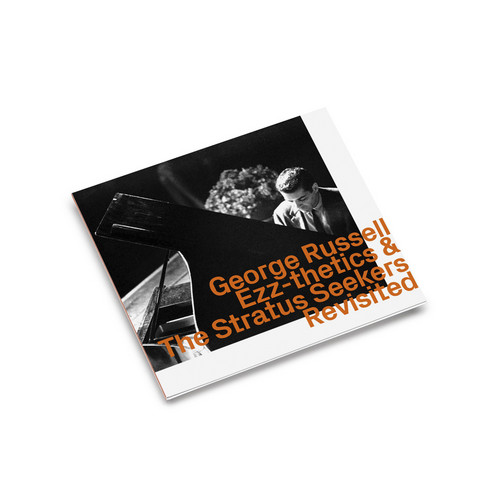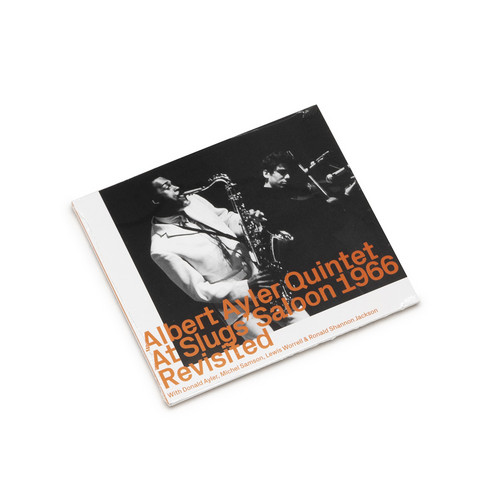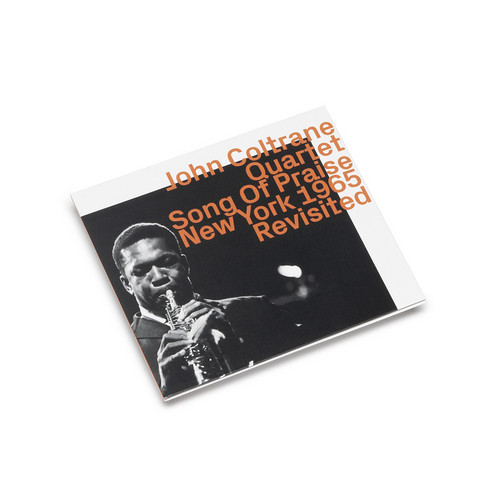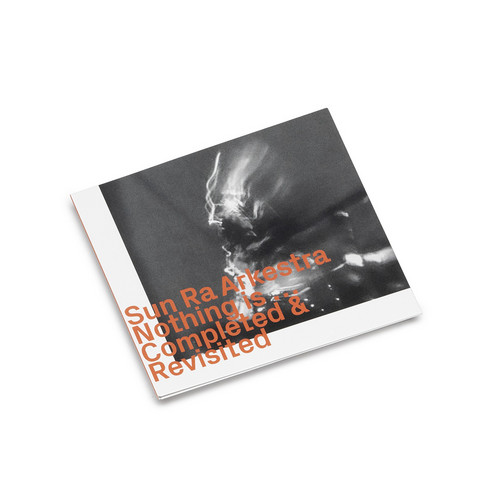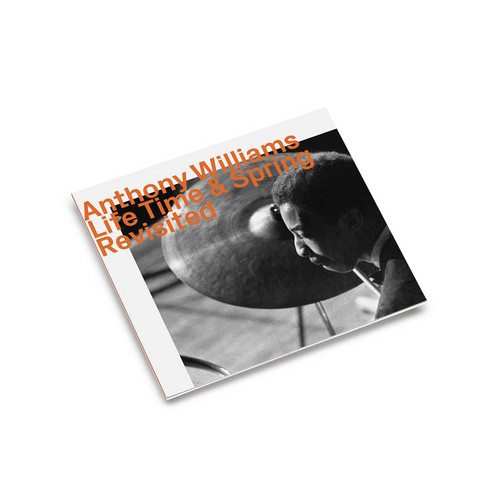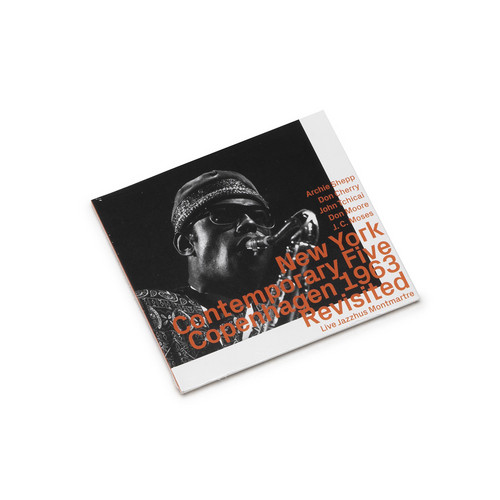Back in stock
Alloa
Huge Tip! The composer, percussionist and instrument builder Limpe Fuchs has spent six decades exploring the outer limits of sound and its effects on the listener. Born in Munich in 1941, Fuchs is part of a generation of German artists who sought radical new approaches to art, music and social organisation in the period following the Second World War. Alloa, Bavarian for alone. Limpe likes to be alone, because she is never lonely. When she is not on concert tours, she cultivates the garden in fr…
La Cave Live, Cleveland 1966
the first authorized release by permission of the Estate of Albert Ayler of the two concerts played at La Cave, Cleveland on April 16 & 17, 1966. Remastered for best possible sound of these under difficult technical circumstances recorded performances.
Free Form & Abstract, Revisited
Unheard music from this key reedman on the British avant scene in the 60s – This double album features Joe Harriott working with a quintet that includes Shake Keane on trumpet, Pat Smythe on piano, Phil Seaman on drums, and Coleridge Goode on bass – playing in territory that's somewhat in the neighborhood of his Abstract and Free Form albums. 'Abstract is split over two dates some months apart, with some change of focus over the set. Free Form has more of the drama of a single creative moment. B…
Berlin, Lörrach, Paris & Stockholm - Revisited
Temporary Super Offer! In the fall of 1966, Albert Ayler embarked on a European tour with his current quintet. For the first time, the four recorded concerts previously issued by Hat are presented here in one package, in chronological order. The group included his brother, trumpeter Donald Ayler, with whom he worked for years but the other three members were relative newcomers to the ensemble. Beaver Harris, who had played and recorded with Archie Shepp and Marion Brown, took over the drum dutie…
Bebop Live
Temporary Super Offer! This release can be seen, informed by the 100th anniversary of Charlie Parker’s birth, as an occasion for not only celebration, but reexamination and rediscovery, based upon the special qualities these particular performances provide. Parker is the focal point, the vortex of energy and ingenuity. The effect of hearing him in this arena of spontaneity and inventiveness is like watching Edison at work in his laboratory. It is Parker at his most audacious and prophetic. - Art…
Point Of Departure to Compulsion!!!!! revisited
Point of Departure was an inflection point in Hill’s output for Blue Note, his penchant for formal complexity and compacted materials – which he revisited beginning in 1969 with a nonet date, tracks with a string quartet-augmented ensemble, and an album with voices – giving way to what proved to be a short-lived foray into the minimally scored pieces that distinguished Compulsion!!!!!. The two recording sessions were separated by only eighteen months, but they were among the most convulsive in j…
The Mess Is Here 1958, Revisited
Recorded live 1958 in Stuttgaert. First time on CD. Performed by: Eddie Williams, Art Hoyle, Eddie Mullens, Dave Gonzales, Macky Kasper trumpets; Louis Blackburn, Wade Marcus, Larry Wilson, trombones; Leon Zachary, Bobby Plater, alto saxophones; Andy McGhee, Gerald Weinkopf, tenor saxophones; Lonnie Shaw, Werner Baumgart, baritone saxophones; Lionel Hampton, vibraphone & piano; Oscar Dennard, piano; Billy Mackel, guitar; Julius Browne, fender bass; Wilbert Hogan drums; Cornelius "Pinocchio" Jame…
Live New York, Revisited
Recorded 1964, 1965 & 1966 live New York. 7 Tracks, 2 tracks never on CD available.
"This fabulous album, recorded during three New York club engagements in 1964, 1965 and 1966, ranks among the finest in the pianist/composer's illustrious catalogue. There are several things going for it: the quality and shared intentionality of the two, slightly different, lineups; the choice of material and its careful sequencing; the vibrancy of the performances, which is enough to practically raise the dead; …
Fire Music To Mama Too Tight, Revisited
'Jost may have had Fire Music and Mama Too Tight in mind when he suggested that by 1965 Shepp spoke “basically two musical languages whose grammar and syntax had hardly any- thing in common.” This reflected the commentariat’s insistence that a chasm existed between free jazz and mainstream jazz practices, and, implicitly, between the New Wave in Jazz and the New Breed led by James Brown. What was revolutionary about Shepp’s music is that it rejected the underlying binary, and embraced an inclusi…
Live Europe 1960 revisited
'The Miles Davis Quintet of early 1960 was an endangered, embattled entity. Davis and his frontline foil John Coltrane had been drifting apart stylistically and temperamentally for months. United in the embrace and exploration of modal devices on the trumpeter’s seminal Kind of Blue album released the previous summer, bandleader and sideman were increasingly at odds as to where to go next with the celebrated innovations.' - Derek Taylor
Favorites Revisited
'The studio side of Coltrane’s catalog has greater consistency in terms of caliber of aural presentation, but fewer occasions for extended improvisation and creation. This is particularly evident in an analysis of the recordings made of his Classic Quartet comprising pianist McCoy Tyner, bassist Jimmy Garrison and drummer Elvin Jones. An ensemble that was a work in progress well before it was a finished cohort, Coltrane’s most fertile band was also best suited to the hot house environment of aud…
With(Exit) To Student Studies, Revisited
'Cecil Taylor’s whole career was a wave-front of exploration. The analogy with light is apposite enough. He evolved so fast most of us never quite caught up and relied instead on a few safe generalisations that momentarily applied around 1962 and only occasionally thereafter. Taylor rarely referenced the space programme, and admitted towards the end of his life that he had found the moon landings “banal”. Like Sun Ra, he was a cosmonaut of sound, breaking free of gravity and showing us the music…
Ezz-thetics & The Stratus Seekers Revisited
*In process of stocking* On Ezz-thetics: Eric Dolphy alto saxophone, bass clarinet, Don Ellis trumpet, David Baker trombone, George Russell piano, Steve Swallow double bass & Joe Hunt drums. On The Stratus Seekers: Paul Plummer tenor saxophone , John Peirce alto saxophone, Don Ellis trumpet, David Baker trombone, George Russell piano, Steve Swallow double bass & Joe Hunt drums. The six albums that George Russell recorded in just two years – starting with Sextet at the Five Spot in September 196…
At Slugs’ Saloon 1966, Revisited
'Among the jazz innovators, Albert Ayler is still considered a solitary figure to this day. From 1964 on he pursued his vision with firm determination. Like no other artist he used well-known melodies from military, marching, blues, gospel and minstrel show music as a starting point, and from these biographical earworm references he set out with the greatest expressiveness into an unconditionality that caused productive disturbance, which his music still does. On the one hand, there are catchy t…
Miles Davis Quintets Stockholm Live 1967 & 1969 Revisited
'Was there more than one Miles Davis? Could he be both the Prince of Darkness and the purveyor of cool? A drug addict and an athletic boxer? A hip bebopper and a protohippie? A flamboyant dresser and a shy vulnerable soul? A brutal misogynist and an insecure romantic? The answer is yes, and yes. Miles Davis was both a creator and a destroyer. His chameleon-like nature can be explained by the times in which he lived and created his art. These live recordings in Stockholm, Sweden, 1967 and 1969, i…
Song Of Praise, Live New York 1965
"These Half Note recordings from March 26 and May 7, 1965, two dates from an extended stay at the club, were captured as a radio broadcast. ezz-thetics has re-sequenced the music here to demonstrate Coltrane’s approach to incorporating all his inventions into a performance, while also mapping a future to his music." – Mark Corroto
Producers note: "We have re-sequenced these tracks to allow the listener to become part of the development of the music and to follow John Coltrane’s evolutio…
Nothing Is...
"Attempts to dismiss Sun Ra as an “outsider” artist, an eccentric who made strange claims, are always own goals. Of course he was an outsider. That was precisely his point. And not just an outsider. He came from so far away we could not imagine it. But he also came from right inside American culture and was deeply shaped by it. There is perhaps no more representative an American artist of the modern period. If the Saturn V rocket was the symbol one kind of hegemony, governed by the dollar and th…
Life Time & Spring (Revisited)
"Life Time posited a radicalism quite different from the other watershed recordings of 1964. Anthony Williams had an overt, unconventional approach to form, accentuated by the time constraints of a LP side and the various configurations he employed... By the time the 19-year-old Williams returned to Van Gelder Studio to record Spring with Hancock, Peacock, Rivers, and Shorter, the avant-garde was ascending... He retained some of the parameters
of Life Time ..." - Bill Shoemaker
Copenhagen 1963 „Revisited“
Despite persisting labeling of its music as avant-garde, The New York Contemporary Five played unthreatening contemporary jazz almost as often as it explored more daring materials. Two of Thelonious Monk’s loveliest melodies – “Monk’s Mood” and “Crepuscule with Nellie” – were embedded into their sets, aswell as three of Ornette Coleman’s more accessible, swinging vehicles, “O.C.,”“When Will the Blues Leave,” and “Emotions.” These pieces provided a perspectiveof contemporary jazz that placed the …
Complete Communion & Symphony For Improvisers
Super Tip! Don Cherry cornet, Gato Barbieri tenors saxophone, Pharoah Sanders, tenor saxophone & piccolo, Karl Berger vibes & piano, Henry Grimes & J.-F. Jenny-Clark double bass, Edward Blackwell drums.“The 1960s were a decade of diversity and discovery for Don Cherry. They began with him an important part of Ornette Coleman’s pathbreaking quartet, and ended as he ventured deeply into the process of. defining his distinctive approach to a world music. But the first six years plot a course of ex…

